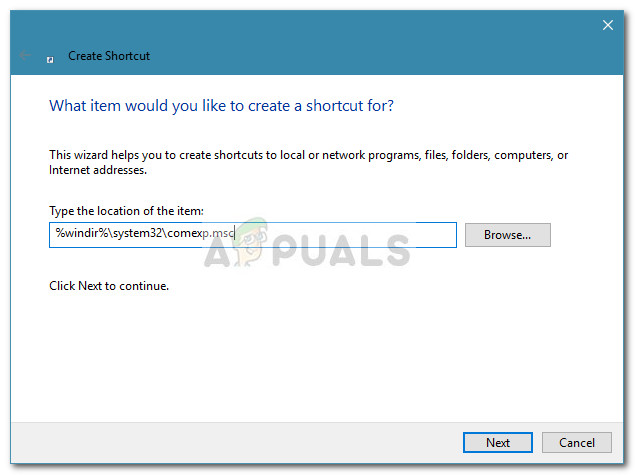If it’s not the result of a Windows bug, the issue can also be caused by a user mistake (accidental deletion) or by a third party cleanup tool. In some rare cases, the Administrative Tools shortcuts can also be tampered by a malware infection.
What is the Administrative Tools folder?
The Administrative Tools folder is located in Control Panel and contains specialized tools that can be used by system administrators and power users to perform various advanced tasks. The Administrative Tools folder on Windows 10 is located on C:\ ProgramData \ Microsoft \ Windows \ Start Menu \ Programs \ Administrative Tools. Here’s a shortlist with the most popular administrative tools that are contained in the Administrative Tool folder:
Note: Keep in mind that the exact tools in your Administrative Tool folder will vary according to your Windows version. If you’re currently looking at an empty Administrative Tools folder, the two methods below will help you restore the administrative tool shortcuts. If you’re looking for a streamlined method of restoring the missing Administrative Tool shortcuts, go with Method 1. If you only use several administrative tools and you don’t care for the rest, follow Method 2 for instructions on how to re-create the missing shortcuts manually.
Method 1: Replacing the missing Administrative Tool shortcuts
The quickest way to restore the missing Administrative Tool shortcuts is to replace them with other entries taken from a healthy computer. To make it easier, we will provide a curated archive with all the components that you need. Follow the guide down below replace the missing administrative Tool shortcuts with healthy entries:
Method 2: Creating the missing Administrative Tools shortcuts manually
If you are only missing a couple shortcuts or you don’t really need the vast majority of the tools present in the Administrative Tools folder, you can actually re-create the missing shortcuts yourself. Here’s a table with the Administrative Tools present in Windows 10 along with their target paths so you can create the shortcuts yourself: To create the shortcuts manually, you’ll need to create an additional folder outside the windows protected files (you won’t be able to create shortcuts directly in the Administrative folder). Instead, create a new folder on your desktop for your convenience. Then, right-click on an empty space and choose New > Shortcut and insert the target directory (consult the table below) of the tool and hit the Next button. Next, enter the name of the shortcut and hit Finish to create it.
Once all the required shortcuts are created, copy them all and navigate to the Administrative Tools folder (C:\ ProgramData \ Microsoft \ Windows \ Start Menu \ Programs \ Administrative Tools). Then, paste the newly created shortcuts in here and confirm at the UAC prompt. That’s it. You have successfully restored the Windows 10 Administrative Tools shortcuts.
How to Hide Administrative Tab in Regional and Language Settings?Fix: To use System Restore, you must specify which Windows Installation to…Fix: System Restore Failed to Extract the File from the Restore PointHow to Fix Windows 11 Desktop Shortcuts Not Showing After Update



